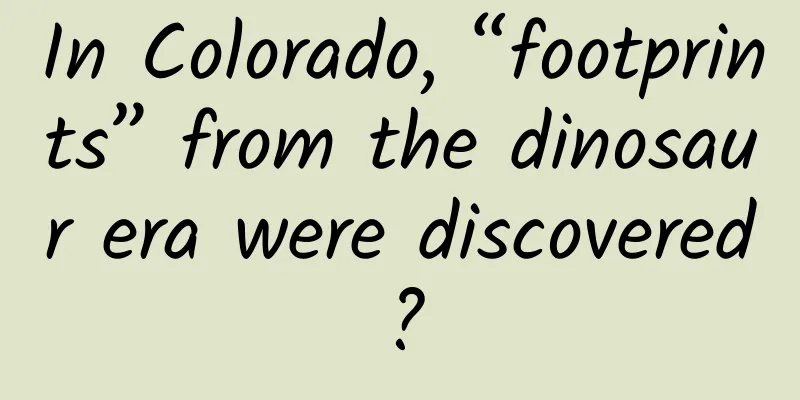In Colorado, “footprints” from the dinosaur era were discovered?

|
Author: Duan Yuechu and Huang Yanhong Near Rangeley, Colorado, a team of paleontologists made a surprising discovery: They unearthed the fossil of a mammal about the size of a muskrat that may have scurried through swamps during the dinosaur era. The discovery was published Oct. 23 in the journal PLOS One by a team led by Jaylin Eberle of the University of Colorado Boulder. The researchers identified the new fossil from a jawbone and three molars and named it "Spruce Snail." The animal thrived in Colorado about 70 to 75 million years ago, when a vast inland sea covered much of the western United States. "Heleocola" means "swamp dweller" in Latin, an apt description of its environment. "Colorado is a treasure trove of fossils, but mammal fossils from this period are very rare," said Eberle, who is also the curator of vertebrate fossils at the CU Museum of Natural History and a professor in the Department of Geological Sciences. "So to find fossils from this period so well preserved in Colorado is amazing." Although the new fossil is tiny compared with the horned ancestors of the era's giant dinosaurs, such as Tyrannosaurus or Triceratops, it is impressively large for a mammal of the time. Eberle is excited about it, noting that Rangeley, a small town in the northwest corner of Colorado near Dinosaur National Monument, is also rich in fossils. This discovery is not only exciting, but also helps us understand more fully the ecological environment of Colorado in ancient times. Paleontologists John Foster and Rebecca Hunter-Foster have come to this area every summer for the past 15 years to dig fossils. They found that 70 million years ago, this was the intersection of land and water, and creatures such as turtles, duck-billed dinosaurs and giant crocodiles may have lived near swamps and estuaries, enjoying rich food resources such as wetland vegetation and fish. Hunter-Foster described the area as being similar to present-day Louisiana, with sharks, rays and guitar fish living in the water. Foster remembers being amazed at the size of the fossil when he first discovered the lower jaw of the mammal from a piece of sandstone in 2016. Eberle explained that before the asteroid impact on Earth 66 million years ago caused the extinction of non-avian dinosaurs, mammals were generally small, most of which were only the size of mice or rats. The "spruce snail" is a relatively huge mammal, which may be a close relative of modern marsupials, weighing up to 2 pounds or more, which is larger than most mammals in the late Cretaceous period. Although dinosaurs occupy an important position in paleontology, this new discovery once again reminds us that ancient mammals are also worthy of attention and study. Finally, Hunter-Foster reminds fossil lovers not to collect vertebrate fossils at random when visiting public places, so as not to interfere with important scientific information. Instead, they should record the location of the fossils, take photos, and notify nearby museums or public land management agencies. She said: "We have scientists from all over the world who specialize in studying our fossils. We are really lucky." References: Paleontologists discover Colorado 'swamp dweller' that lived alongside dinosaurs | ScienceDaily |
<<: #千万IP创科学热门#丨Minnan flower bricks, can cement also bloom?
Recommend
Has anyone seen a hummingbird in the country? No, it may not even be a bird
“There are hummingbirds in the wild in China” Man...
Android 12 is here! Check out the Android 12 preview for hands-on experience
Recently, Google suddenly released the Android 12...
Characteristics of several common distribution channels such as Weibo and Tik Tok!
If you choose the right promotion channel , you w...
Operational notes from Tencent PM: 3 major skills for product operation
Making TO C products is like playing with buildin...
Ren Zhengfei: Huawei can build a Hongmeng mobile phone system comparable to iOS in less than 2-3 years
On September 19, after the Huawei Mate 30 series ...
A glass of beer costs hundreds of dollars, is it a tax on your IQ?
In recent years , craft beer has become popular i...
Free data for life? SAIC-GM upgrades its Internet of Vehicles service
On August 23, SAIC-GM announced that it will laun...
If there is no growth, why don’t you try Zhihu? Zhihu Follower Increase Secrets
Traffic is something that all major companies are...
The price of cooking oil has skyrocketed by more than 20%. Which type of cooking oil should we buy for our home that is cheap and healthy?
Last weekend, the oil price increase once again b...
Tech keywords for 2016: layoffs, VR/AR, IoT
2015 has been a long and busy year, and my crysta...
In a few thousand days, will humans enter the intelligent age?
[Editor's Note] Currently, general artificial...
APP promotion notes: 100-day channel promotion work summary! Attached is a list of various channel resources!
1. APP recommendation websites recommend themselv...
How difficult is it to produce the blue fireworks in the TV series "Nothing But Thirty"?
In the TV series “Nothing But Thirty”, “blue fire...
Unfettered space exploration may be threatening the future of “space security”
【Mobile software: Bo Ke Yuan】As countries and pri...
10,000 years of calculation can be completed in just 200 seconds. Is this computer really that powerful?
Quantum computing is big news again! In July 2023...









